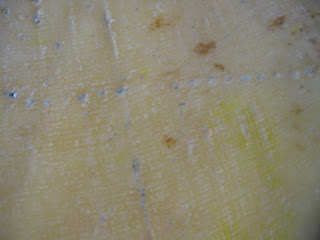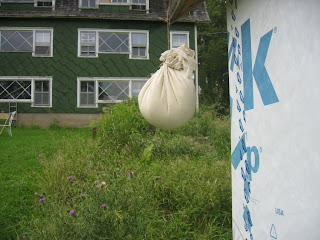




In the old days, in Holland, and I assume many other countries, some whey was used to make baked goods and deserts, before it went to the pigs. The whey is still full of minerals and nutrition.
So, after the Ricotta, I decided to make some whey pap. My mother was visiting from Holland and she told me that her mother used to make it once in a while after making cheese.
Basically, pap is a sort of pudding made of grains boiled in milk or in this case whey. I used rye flakes, buckweat, flour and raisins. Top this with some cinnamon and maple syrup, and you have a delicious and nutritional desert. Or breakfast if you like.




































